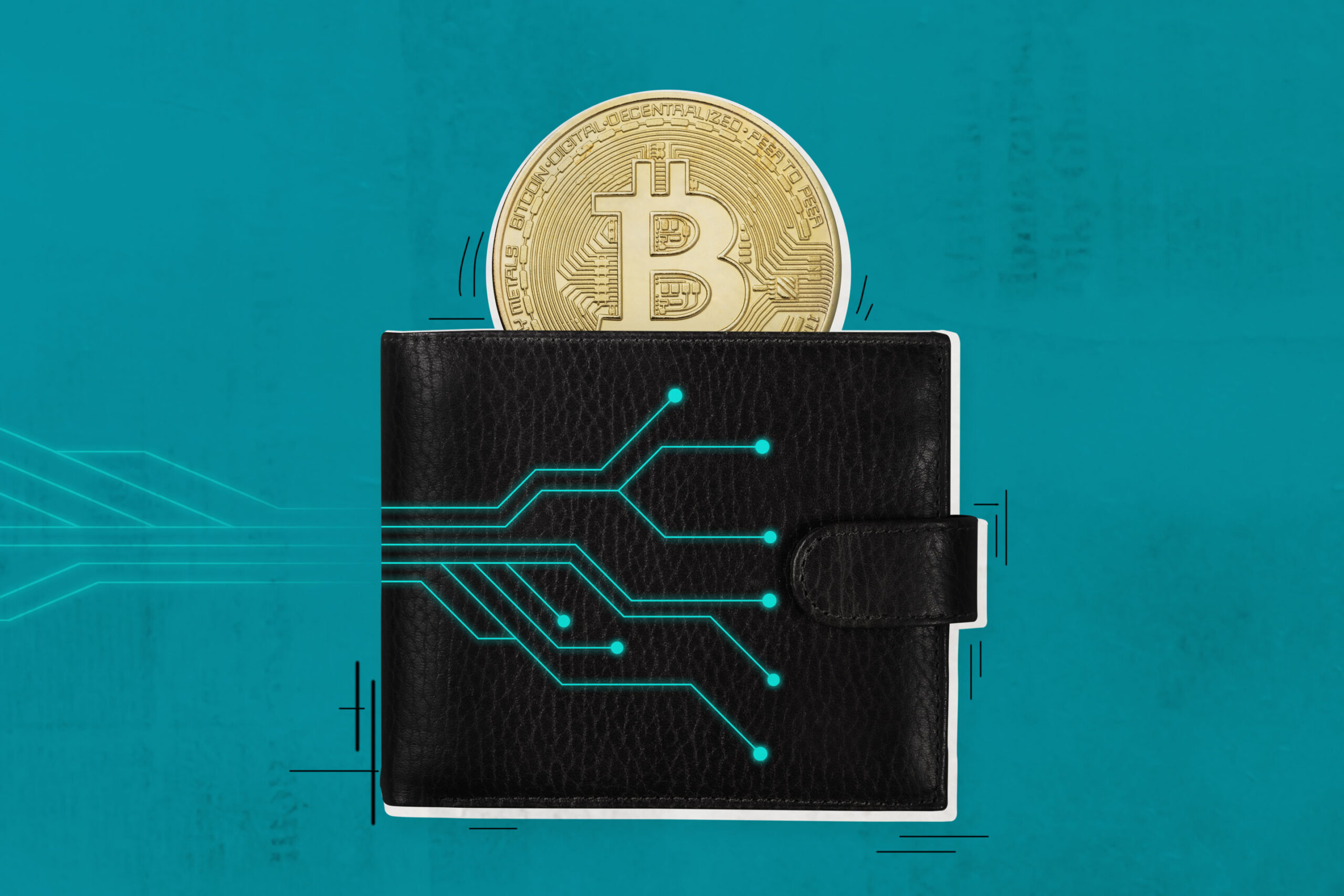Where is Blockchain Stored: Understanding the Secure Storage of Digital Transactions

Blockchain is stored in a decentralized network of computers called nodes, which are connected through a peer-to-peer network. This network maintains a distributed ledger that records all transactions and data on the blockchain.
Blockchain technology has emerged as a revolutionary concept that is transforming various industries, from finance to supply chain management. The fundamental question that arises is, where is blockchain stored? The answer lies in the decentralized nature of blockchain, which is stored on a network of computers known as nodes.
These nodes are interconnected through a peer-to-peer network, forming the backbone of the blockchain ecosystem. This distributed network ensures that there is no central authority or single point of failure, making the blockchain highly secure and resilient. We will delve deeper into the intricacies of blockchain storage and understand how it functions within this decentralized framework. So, let’s explore the fascinating world of blockchain and its storage mechanisms.

Credit: www.amazon.com
The Basics Of Blockchain Storage
Overview Of Blockchain Data Structure
Blockchain is a revolutionary technology that has captured the attention of many industries around the world. At its core, blockchain is a decentralized ledger that stores information in a secure and transparent manner. But where exactly is this vast amount of data stored?
Let’s delve into the basics of blockchain storage to get a better understanding.
- Blockchain data is stored across a network of computers or nodes. This decentralization ensures that there’s no single point of failure and makes the system more secure.
- The blockchain data structure is organized into blocks, which are essentially containers for storing information. These blocks are linked to each other in a linear and chronological manner, forming a chain.
Explanation Of Blocks And Transactions
- Each block in the blockchain contains a set of transactions. Transactions represent the movement of digital assets or information on the network.
- When a new transaction occurs, it is added to a pool of unconfirmed transactions. Miners, who are participants in the network responsible for validating transactions, collect these unconfirmed transactions and bundle them into a block.
- Once the block is created, miners compete to solve a mathematical puzzle to add the block to the existing blockchain. This process is known as mining, and it ensures the security and integrity of the blockchain.
The Role Of Cryptographic Hashes
- Cryptographic hashes play a crucial role in blockchain storage. A hash function takes an input (data) and creates a fixed-size alphanumeric output, called a hash.
- Each block in the blockchain contains a unique hash, which is generated by applying the cryptographic hash function to the block’s data. This hash serves as a digital fingerprint for the block and ensures its immutability.
- If any data in a block is altered, even by a single character, the resulting hash would be completely different. This property makes it virtually impossible to tamper with the data stored in the blockchain without detection.
Merkle Trees And Their Significance In Blockchain Storage
- Merkle trees, also known as binary hash trees, are an efficient data structure used in blockchain storage.
- Instead of hashing entire blocks of data, merkle trees divide the data into smaller portions called leaves. Each leaf is then hashed individually.
- The resulting hashes are then paired, and the process is repeated until a single hash, known as the merkle root, is obtained. This merkle root is stored in the block header.
- The merkle root allows for efficient verification of the integrity of the data stored in the blockchain. By comparing a transaction’s hash to the merkle root, participants in the network can quickly confirm if the transaction is included in a block without having to process the entire block’s data.
Understanding where blockchain is stored helps us appreciate its decentralized nature and the security it provides. The data structure, comprised of blocks and transactions, is secured using cryptographic hashes and organized using merkle trees. This combination of elements ensures the transparency, integrity, and immutability of the information stored in the blockchain.
Decentralized Storage In Blockchain
Decentralized storage is an essential aspect of blockchain technology that ensures the security and immutability of data within the network. In this section, we will explore the concept of decentralized storage, the role of peer-to-peer networks, the impact of consensus algorithms, and some examples of decentralized storage platforms used in blockchain.
Introduction To Decentralized Storage
Decentralized storage refers to the distribution of data across multiple nodes instead of relying on a centralized server. This approach offers several advantages, including enhanced security, improved data integrity, and increased resistance to censorship or tampering. By removing the reliance on a single point of failure, decentralized storage provides a reliable and robust solution for blockchain applications.
Peer-To-Peer Networks And Their Role In Blockchain Storage
Peer-to-peer (p2p) networks play a crucial role in decentralized storage within blockchain systems. These networks consist of multiple interconnected nodes, each hosting a copy of the blockchain data. By utilizing p2p technology, blockchain participants can store and retrieve information directly from other network participants, eliminating the need for a centralized authority.
Key points:
- P2p networks enable data distribution across multiple nodes, ensuring redundancy and resilience.
- Participants within the network can contribute their storage capacity to the collective storage pool, creating a community-driven ecosystem.
- Data is encrypted and distributed across multiple nodes, enhancing security and privacy.
Consensus Algorithms And Their Impact On Storage
Consensus algorithms are integral to blockchain technology as they ensure the agreement among network participants on the validity of transactions and the state of the blockchain. The chosen consensus algorithm has a direct impact on how storage is managed within the network.
Key points:
- Proof of work (pow) consensus algorithm, used by bitcoin, requires miners to solve complex mathematical puzzles to validate transactions and add them to the blockchain. This process demands substantial computational power and storage capacity.
- Proof of stake (pos) consensus algorithm, utilized by platforms like ethereum 2.0, selects validators based on the number of coins they hold, reducing the need for extensive storage requirements.
- Other consensus algorithms, such as delegated proof of stake (dpos) and practical byzantine fault tolerance (pbft), have different approaches to managing storage within the blockchain network.
Examples Of Decentralized Storage Platforms In Blockchain
Several decentralized storage platforms have emerged to cater to the storage needs of blockchain applications. These platforms leverage distributed networks, encryption, and incentive mechanisms to provide secure and scalable storage solutions.
Key points:
- Ipfs (interplanetary file system): A peer-to-peer distributed file system that allows users to store and retrieve files in a decentralized manner.
- Storj: An open-source decentralized cloud storage platform that utilizes blockchain technology and encryption to ensure data security and privacy.
- Sia: A blockchain-based cloud storage platform that breaks files into smaller encrypted pieces and stores them across a decentralized network of nodes.
- Filecoin: A decentralized storage platform that enables storage providers to offer their resources in exchange for filecoin cryptocurrency, creating a marketplace for storage services.
Decentralized storage is a fundamental aspect of blockchain technology, ensuring data integrity, security, and accessibility. Peer-to-peer networks and consensus algorithms play crucial roles in managing storage within the blockchain ecosystem. As the technology continues to evolve, innovative storage platforms provide scalable and secure options for blockchain applications.
Public Vs. Private Blockchain Storage
Blockchain technology has revolutionized the way we store and manage data, and one key question that arises is: where is blockchain stored? In this section, we will delve into the different storage options for blockchain technology, focusing specifically on public and private blockchains.
Key Differences Between Public And Private Blockchains:
- Public blockchains are decentralized networks where anyone can participate, whereas private blockchains are controlled by a single organization or consortium.
- Public blockchains are open and transparent to all participants, whereas private blockchains offer restricted access to authorized individuals or groups.
- Public blockchains are secured using consensus mechanisms like proof-of-work (pow) or proof-of-stake (pos), whereas private blockchains may employ different consensus protocols tailored to their specific security requirements.
- Public blockchains often have native cryptocurrencies, while private blockchains may or may not have their own tokens.
- Public blockchains have a higher level of security due to their decentralized nature, whereas private blockchains offer increased privacy and control to the participating entities.
Discussion On The Storage Of Transactions In Public Blockchains:
- Transactions in public blockchains are stored in a distributed manner across multiple nodes or computers that form the network.
- Each participating node maintains a copy of the entire blockchain, ensuring redundancy and protection against single points of failure.
- Public blockchains typically use a peer-to-peer protocol, such as the bitcoin network, where transactions are stored in blocks that are linked together in a chain.
- The transparency of public blockchains allows anyone to verify and audit transactions, enhancing trust and accountability.
- The distributed storage of transactions in public blockchains provides robustness and immutability, making it extremely challenging for malicious actors to tamper with the data.
Examination Of Storage Solutions In Private Blockchains:
- Private blockchains often adopt a different approach to storage compared to public blockchains.
- Instead of relying on public networks, private blockchains leverage permissioned networks that grant access only to authorized participants.
- The storage of transactions in private blockchains can vary depending on the specific technology used.
- Some private blockchains employ a centralized storage model, where a central authority or trusted entity maintains the ledger.
- Others use a distributed storage system similar to public blockchains, but with restricted access to a selected group of participants.
- Private blockchains may also integrate existing enterprise storage solutions to manage and store transaction data securely.
The storage of blockchain transactions differs significantly between public and private blockchains. Public blockchains rely on a distributed network of nodes to store and validate transactions, ensuring transparency, immutability, and security. On the other hand, private blockchains offer more control and privacy, with storage solutions tailored to the specific requirements of the participating entities.
Understanding these different storage approaches is essential to fully grasp the capabilities and limitations of blockchain technology.
Secure Storage Measures In Blockchain
Blockchain technology has gained significant popularity due to its decentralized and secure nature. But have you ever wondered where exactly the blockchain data is stored? In this section, we will explore the secure storage measures employed in blockchain and how they contribute to its robustness.
Introduction To Secure Storage Measures
- Block structure: Blockchain data is stored in a series of blocks, which are linked together in a chain. Each block contains a set of transactions along with a unique identifier called a hash.
- Distributed ledger: Blockchain is maintained by a network of computers known as nodes, which collectively store and verify transactions. This distribution ensures that there is no centralized point of failure and makes it highly resistant to attacks.
- Immutable records: Once a block is added to the blockchain, it becomes virtually impossible to modify or delete the data stored within it. This immutability provides added security and transparency to the system.
Encryption Techniques Used In Blockchain Storage
- Symmetric encryption: Blockchain employs various encryption methods to safeguard the stored data. One such technique is symmetric encryption, where a single key is used to both encrypt and decrypt the data. This ensures that only authorized individuals with the key can access the information.
- Asymmetric encryption: Another encryption method used in blockchain storage is asymmetric encryption. This involves the use of two different keys – a public key and a private key. The public key is openly accessible and is used for encryption, while the private key, held only by the owner, is used for decryption.
Public Key Cryptography And Its Application In Secure Storage
Public key cryptography plays a significant role in ensuring secure storage in blockchain. Here’s how it works:
- Each participant in the blockchain network has a unique pair of public and private keys.
- When a transaction is initiated, the sender encrypts it using the recipient’s public key. This ensures that only the intended recipient can decrypt and access the transaction data.
- The recipient, in turn, uses their private key to decrypt the received message.
- Public key cryptography guarantees confidentiality and authentication, as each participant’s identity can be verified using their public key.
Hashing Algorithms For Data Integrity And Verification
Hashing algorithms contribute to the reliability and integrity of blockchain storage. Here’s how they work:
- A hashing algorithm takes input data and generates a unique fixed-length string called a hash value.
- Each block in the blockchain contains the hash value of the previous block, creating a chain-like structure.
- Any change in the data stored within a block would result in a different hash value, instantly alerting the network to tampering attempts.
- Hashing algorithms also aid in verifying the integrity of data by comparing the computed hash value with the stored hash value, ensuring that it hasn’t been altered.
Secure storage measures are an essential part of blockchain technology. Through block structures, distributed ledgers, encryption techniques, public key cryptography, and hashing algorithms, blockchain achieves a high level of data protection and integrity. This ensures that the information stored in the blockchain remains secure and tamper-proof, making it a reliable technology for various applications.
Challenges And Solutions In Blockchain Storage
Blockchain technology has revolutionized various industries by offering transparent, secure, and decentralized record-keeping systems. However, storing data effectively and efficiently on a blockchain poses certain challenges. In this section, we will explore the key challenges faced in blockchain storage and the potential solutions available.
Let’s dive in!
Addressing Scalability Issues In Blockchain Storage
The issue of scalability is a major concern when it comes to blockchain storage. As more and more data is added to a blockchain, the size of the database grows exponentially. This can result in slower transaction processing times and increased storage requirements.
To overcome these challenges, here are some solutions:
- Sharding: Sharding involves splitting the blockchain into smaller, more manageable pieces called shards. Each shard contains a subset of the overall data, reducing the storage burden on individual nodes and improving scalability.
- Off-chain solutions: Off-chain storage involves moving non-critical data off the main blockchain while still maintaining its integrity. By storing less important data off-chain, the blockchain can operate more efficiently and rapidly process transactions.
- Layer 2 protocols: Layer 2 protocols, such as the lightning network for bitcoin, are designed to enhance scalability by conducting transactions off-chain and only periodically settling the results on the main blockchain. This approach greatly improves storage efficiency and reduces congestion on the blockchain.
Layer 2 Protocols For Improved Storage Efficiency
Layer 2 protocols play a crucial role in improving storage efficiency by enabling transactions to be conducted off the main blockchain. Here are some key points about their role:
- Transaction speed: Layer 2 protocols facilitate faster transactions by conducting them off-chain and settling the results periodically on the main blockchain. This significantly reduces the time required for transaction confirmation.
- Reduced costs: By moving transactions off-chain, layer 2 protocols help reduce transaction fees, making blockchain technology more accessible to a wider range of users.
- Greater scalability: Layer 2 solutions enhance scalability by reducing the burden on the main blockchain. This enables blockchain networks to process a larger number of transactions per second, improving overall efficiency.
Future Advancements And Potential Solutions
As blockchain technology continues to develop and evolve, advancements in storage solutions are being explored. Here are some potential future advancements and solutions to address blockchain storage challenges:
- Improved consensus mechanisms: New consensus mechanisms, such as proof of stake (pos), are being developed to enhance scalability and reduce energy consumption, ultimately improving storage efficiency.
- Decentralized storage networks: Decentralized storage networks, such as ipfs (interplanetary file system), provide distributed and resilient storage for blockchain systems. These networks can address storage capacity constraints and improve overall data availability.
- Optimized data structures: Research is being conducted to optimize blockchain data structures, enabling more efficient storage and retrieval of data.
The challenges of blockchain storage are being actively addressed through innovative solutions such as sharding, off-chain storage, and layer 2 protocols. Furthermore, future advancements hold promising potential for improved storage efficiency in blockchain technology. By overcoming these challenges, blockchain systems can continue to provide secure and scalable storage solutions that revolutionize various industries.
Frequently Asked Questions Of Where Is Blockchain Stored
Where Is Blockchain Stored?
Blockchain is stored on a decentralized network of computers called nodes that collectively maintain and update the blockchain.
How Does Blockchain Store Data?
Blockchain stores data using blocks that contain information about transactions, which are linked together in a chain-like structure.
Can Blockchain Data Be Altered?
No, blockchain data is designed to be immutable and tamper-proof, making it extremely difficult to alter or delete information once it is added to the blockchain.
Is Blockchain Data Secure?
Yes, blockchain data is secured through complex cryptographic techniques that ensure the integrity and confidentiality of information stored on the blockchain.
Who Has Access To Blockchain Data?
Blockchain data is accessible to anyone with a valid copy of the blockchain, but specific permissions and restrictions can be implemented to control access to certain data on the blockchain.
Conclusion
The question of where blockchain is stored has been answered. Blockchain is a distributed ledger technology that stores data across multiple computers or nodes, forming a decentralized network. The data is stored in blocks, which are linked together in chronological order to form a chain.
Each block contains a unique cryptographic hash that verifies the integrity of the data stored within it. By storing data in a decentralized manner, blockchain ensures transparency, immutability, and security. The distributed nature of blockchain makes it resistant to hacking and manipulation, as altering a single block would require changing the entire chain on every node, which is computationally impossible.
Furthermore, blockchain storage eliminates the need for a central authority or intermediary, removing the risk of a single point of failure. This not only enhances security but also increases efficiency and reduces costs. As blockchain technology continues to evolve, it is being adopted in various industries beyond cryptocurrency, such as supply chain management, healthcare, and finance, where data privacy and security are paramount.
With its decentralized and secure storage, blockchain is poised to revolutionize the way we store and exchange data in the digital age.







